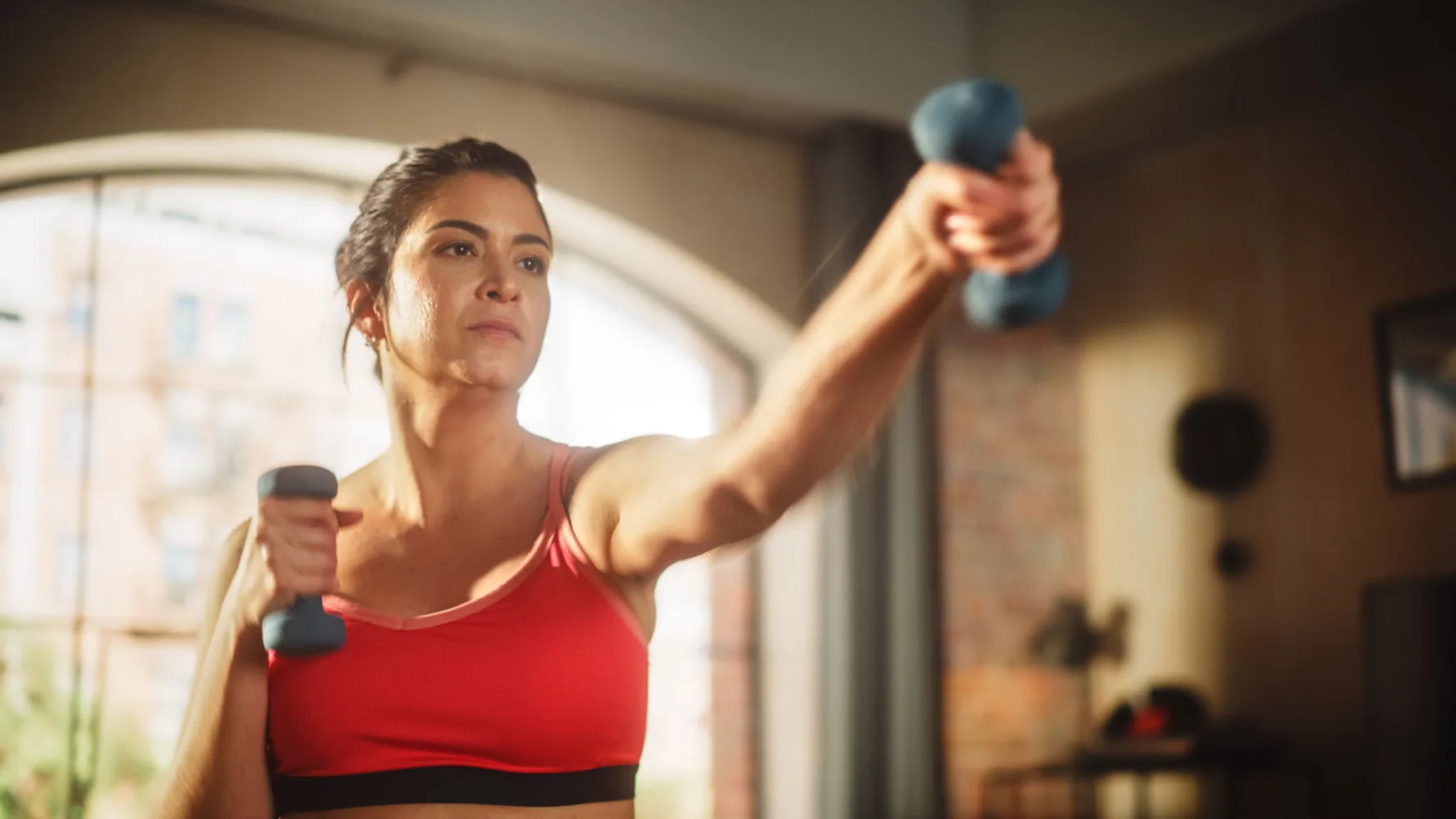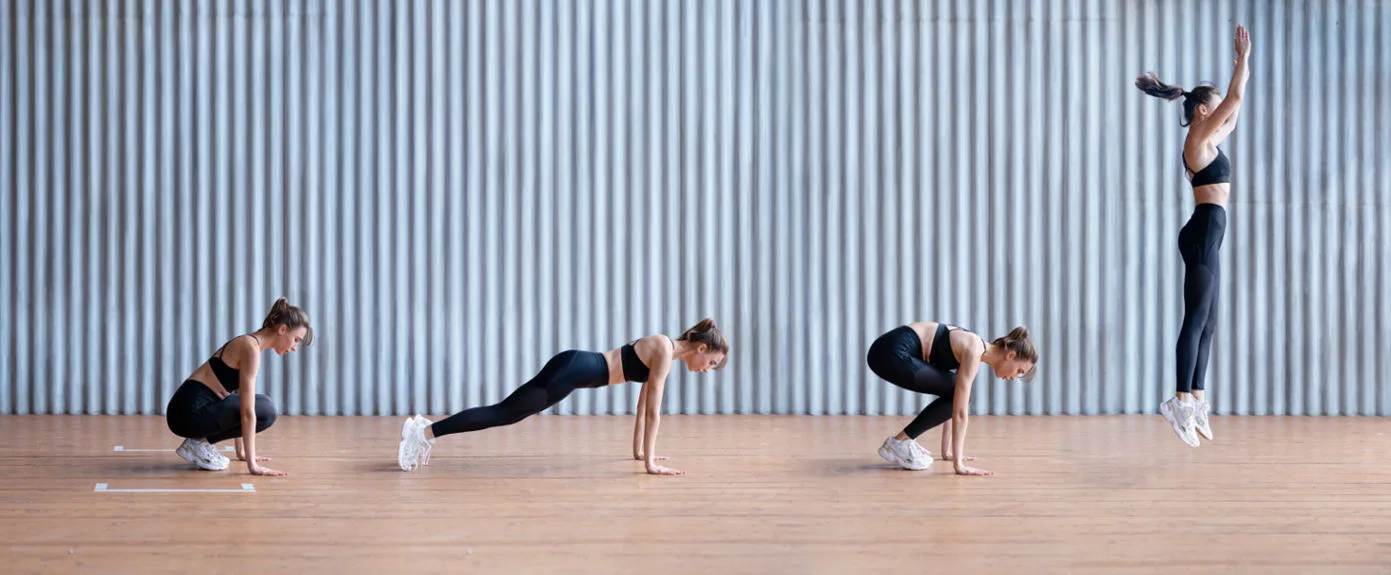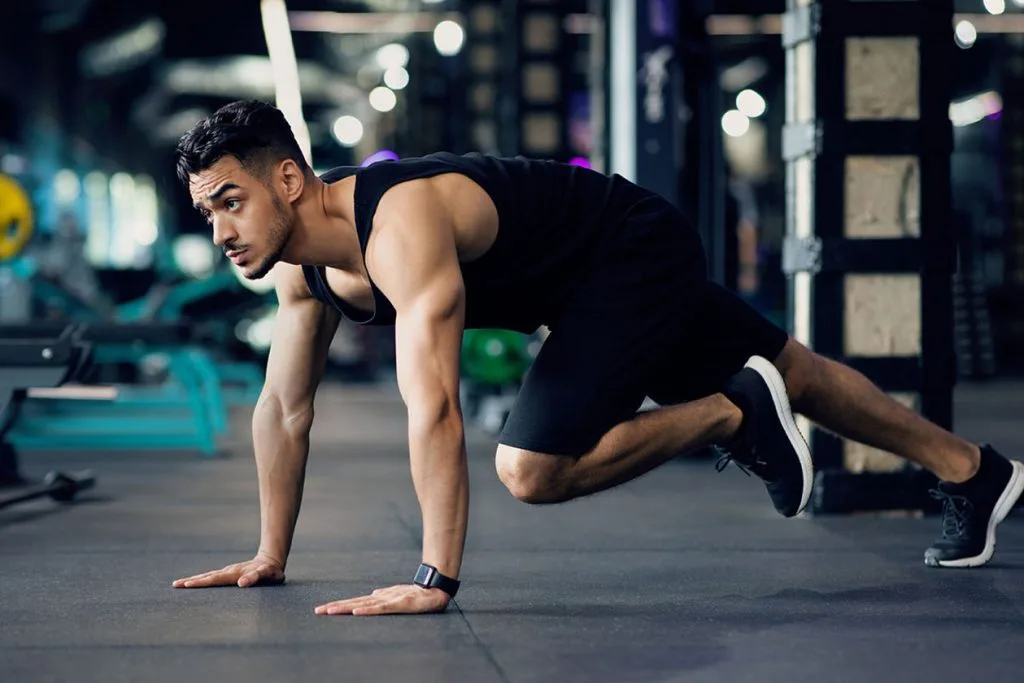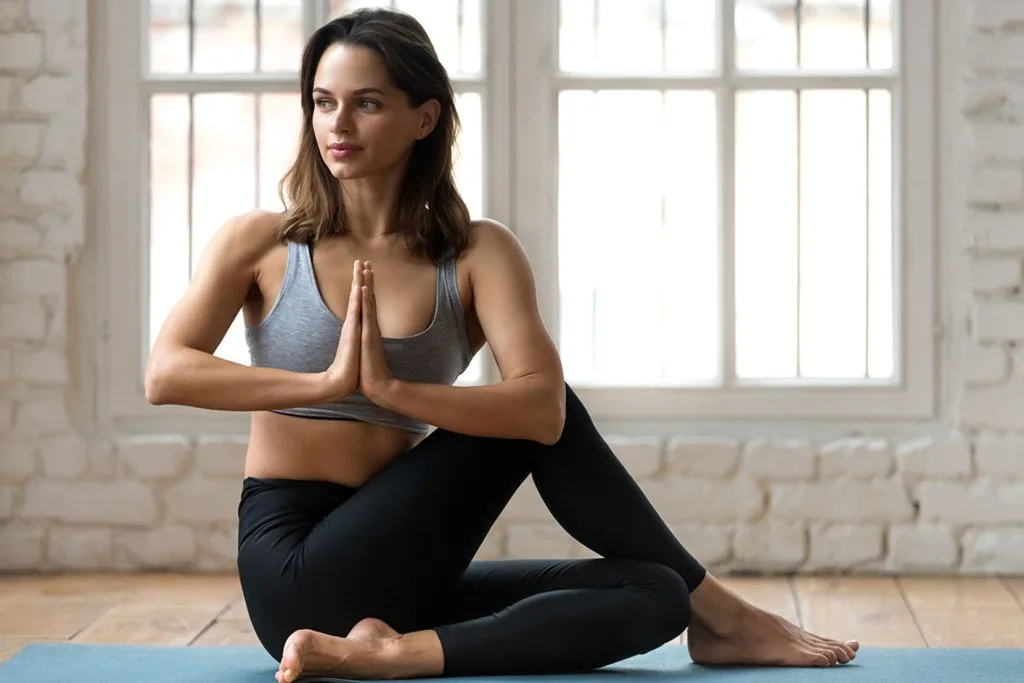The importance of doing regular cardio exercises to stay in shape and have a fit body cannot be ignored; however, going to a gym or exercising outside may not always be possible. This is where cardio exercises that you can do at home come into play. These exercises, which can be easily done without any equipment, will help you increase your heart rate and easily maintain your energy by staying active. If you are wondering, ‘But how can you do cardio at home?’, it is time to discover the guide we have prepared for you!
Table of Contents
Toggle8 Cardio Exercises You Can Do At Home
There are many cardio options that can help you turn your home into a personal gym, with no cost or transportation required. Whether you’re a beginner or someone who wants to stay fit on days when they can’t make it to the gym, you can explore options that are suitable for everyone who wants to try cardio moves at home.
Shadow Boxing
Also known as shadow boxing, this move is based on imitating the movements of a boxer and aims to improve your agility, coordination and cardiovascular endurance.
- Stand with your feet shoulder-width apart.
- Keep your fists in front of your face and your elbows close to your body.
- Punch into the air, alternating between left and right sides.
- Gain speed by moving your feet back and forth [8] .

Mountain Climber
Mountain Climbers is a type of exercise that you can easily see where the name comes from when you experience the movement. It is a full-body movement that targets your core, shoulders and legs while increasing your heart rate.
- Come into a high plank position with your hands at shoulder height.
- Pull your right knee toward your chest, then quickly switch legs, bringing your left knee toward your chest.
- Continue alternating legs at a fast pace as if you were running in place [9] .
Jumping Jack
Jumping Jack is a simple but effective cardio exercise that draws attention with its effects as much as its name, working your entire body.
- Stand with your feet together and your arms at your sides.
- While jumping, simultaneously open your legs to the sides and raise your arms above your head.
- Jump again to return to the starting position with your feet together and your arms at your sides.
- Repeat continuously at a steady pace [10].
Burpee
Burpees are another high-intensity exercise that combines squats, planks, and jumps, thus targeting multiple muscle groups.
- Start by standing.
- Place your hands on the floor and get into a squat position with your hips.
- Jump your feet back into plank position.
- Quickly bring your feet back into a squat position.
- Jump explosively, raising your arms above your head.
- Repeat this sequence of movements without interruption [11] .

Knee Up
The ‘knee up’ pose is another effective cardio exercise that targets your lower body and core.
- Stand with your feet hip-width apart.
- Pull your right knee towards your chest.
- Quickly lower your right knee and pull your left knee toward your chest.
- Continue alternating your knees quickly as if you were running in place, with high steps [12] .
Box Jumps
‘Box jumps’ are an exercise classed as a plyometric movement as they involve sudden jumping movements that improve your explosive power and cardiovascular fitness.
- Stand in front of a sturdy box or a similarly constructed platform if you don’t have one.
- Bend your knees and swing your arms back to generate jumping power.
- Jump onto the box, landing softly with both feet.
- Carefully lower down and repeat [13] .
Rope Skipping
Jumping rope is a fun and effective cardio exercise for those who want to improve coordination and agility at the same time. Although there are many variations, starting with the most basic rope jumping technique is enough to get closer to your goals.
- Hold the handles of the jump rope.
- Swing the rope in a circle over your head and jump as it passes under your feet.
- Continue jumping at a steady pace, keeping your feet close together.

Running in Place
Running in place is a form of at-home cardio that mimics the motion of running without requiring much space.
- Stand with your feet hip-width apart.
- Lift your knees and pump your arms back and forth in the air as if you were running.
- Maintain this pace, lifting your knees higher for increased intensity.
You too can access free cardio exercises and workouts with MAC+, MAC’s unique sports application , and enjoy exercising wherever and whenever you want. Click the button below to download the application to your phone
What are Cardio Exercises and What are their Benefits?
The term “cardiovascular training” is derived from the Greek word “kardía” meaning “heart” and over time it has come to be known simply as cardio exercises. Simply put, these are exercises developed to increase your heart rate and keep it at a high level for a long time, thus protecting the health of the heart and circulatory system. Cardio movements consist of a series of high-speed physical exercises performed consciously and in a coordinated manner.
What are Cardio Exercises?
The most important feature of a successful cardiovascular workout is that it challenges you to a level that will cause you to breathe faster than you do at rest. This aims to pump more blood and oxygen to provide more energy to the body.
Cardiovascular exercises or cardio movements as they are commonly known, you may also hear them as “aerobic exercise”. This concept also emphasizes the use of oxygen to produce energy and the use of high-speed, challenging, gradual movements. If you ask, “So how is cardio done?” you can think of many common sports models without going too far with complicated or costly workouts.
- Cycling
- Running
- Walking and brisk walking
- Rowing
- Swimming
- Step
Many classic training methods such as are among the first options that come to mind when it comes to cardio exercises [1] .

Why Are Cardio Exercises Preferred?
In addition to being extremely fun and fast-paced, cardio exercises have many undeniable benefits. The most important of these benefits is reaching the ideal weight or controlling the current weight, but protection against heart disease is also among the prominent cardio exercise benefits.
It’s no secret that any exercise can help boost your mood and energy, but to improve your mood, you need to know that cardio plays a major role in boosting your happiness. The tempo and challenge of cardio exercises help produce endorphins, hormones that not only help you feel good but also have a pain-relieving effect.
Many studies show that people who do cardio exercise regularly have the potential to live longer [2] . The effects of cardio are not limited to this, but there are other important and valuable benefits that you should know to stay motivated and learn how to do cardio as soon as possible:
- It supports the preservation of brain functions that decline with age and may help prevent diseases such as Alzheimer’s.
- It is one of several protective measures against bone health-related problems such as fractures and osteoporosis.
- By optimizing stress levels, it can reduce chronic skin problems such as eczema.
- By increasing blood flow and oxygenation of tissues, it helps nourish the skin and make it look brighter and younger.
- It helps to gain muscle mass, a fit appearance and increase strength.
You can find many benefits in a single workout with cardio movements that help the body in many ways, such as regulating your intestinal microbiota, balancing blood sugar, reducing fatigue and improving sleep quality [1] .

Things You Need to Know Before Doing Cardio Exercises at Home
One of the best aspects of cardio exercises that improve your quality of life in many ways is that you can continue these exercises in the comfort of your home. The discipline, comfort and sociality offered by a gym can be quite motivating. However, for those who do not leave room for excuses, doing cardio exercises at home without the need for any equipment will always continue to be a good option.
Doing cardio exercises at home is considered quite reliable due to the reasons such as using body weight and being able to easily reduce the tempo according to personal condition. However, as in every type of sport, cardio movements also include some rules that need to be followed. Paying attention to these warnings can help you organize a safer and more effective sports routine.
Consult a professional: If you have any existing health issues or concerns, you should consult your doctor or healthcare professional before starting a new exercise program. It is especially important for those with heart disease, diabetes or other chronic conditions to consult a professional to determine their routine [3] .
Make choices that fit your goals: If your goal is to lose weight, you can focus on high-intensity interval training (HIIT) or longer, moderate-intensity cardio sessions. To increase cardiovascular endurance, opt for cardio exercises like running or cycling with home equipment. A mix of different cardio exercises can keep your routine both interesting and balanced for a more overall fit and tone [4] .
Don’t stay hydrated: It’s a good idea to drink water before, during and after exercise to prevent dehydration. According to the American Council on Exercise, drinking 0.5 – 0.6 liters of water 2-3 hours before exercise and 0.2 – 0.3 liters every 10-20 minutes during exercise may be enough to meet your needs [5] .
Monitor your heart: You can track your heart rate during exercise to make sure you’re working at an appropriate intensity level. Now that you can use smartwatches, it makes things a lot easier. There are also many phone apps that act as monitors to give you a rough idea of your heart rate. If you’re wondering what ranges you should work at, keep in mind that the target heart rate for cardio exercises is considered to be 50-70% of your maximum heart rate [5] .
Be consistent: The key to getting results from cardio is to have a consistent routine. Instead of setting high goals in a short period of time and exhausting your willpower, try to stick to meaningful and doable goals. If you don’t know what intensity to follow, you can do at least 150 minutes of moderate-intensity cardio per week or 75 minutes of vigorous-intensity cardio [6] , ideally choosing to do your routine 3 to 5 days per week [7] .
By following these suggestions, you are now even more prepared to do cardio exercises at home! Now it’s time to learn how to do cardio at home.

Cool Down Exercises After Cardio
After cardio exercise, it will be necessary to gradually return your heart rate and breathing to normal. Therefore, here are some cool-down exercises that you can include in your cardio routine at home:
Slow walking: Walking at a comfortable pace for 5-10 minutes helps gradually lower your heart rate and temperature.
Light stretches: You can focus on stretching the main muscle groups you work during the exercise, such as your legs, back, shoulders and arms, holding each stretch for 15 to 30 seconds before moving on to the next.
Breathing exercises: To encourage the body to relax and reduce possible muscle fatigue, you can do deep breathing exercises. One of the most common and simple techniques for this is to take a deep breath through your nose, hold it for a few seconds, and then slowly exhale through your mouth.
Foam roller exercises: You can use foam rollers to massage your muscles and relieve tension. Slowly roll the roller over areas where you feel tense or tired, continuing to apply light pressure.
Yoga poses: Focusing on flexibility, balance, and core strength, yoga poses are great for building bodyweight strength while still relaxing. Try poses like Child’s Pose, Cat-Cow Stretch, and Cobra Pose.

Relaxation techniques: You can do meditations with audio guidance to calm your mind as well as your body and support rapid recovery. You can combine meditative practices for the mind with relaxation techniques in different poses.
By incorporating cool-downs into your post-cardio routine, you can prevent muscle soreness, increase flexibility, or support overall recovery. You can personalize the intensity and duration based on your fitness level and how your body feels after exercise [14] .
Now that you have learned how to do cardio at home and what to cool down after, you are ready to create a more active and healthy routine! You can start a healthy routine now that you have discovered how easy, customizable and fun it is to do cardio at home. Take action to live your life more actively and energetically and start adopting a healthy lifestyle today.



